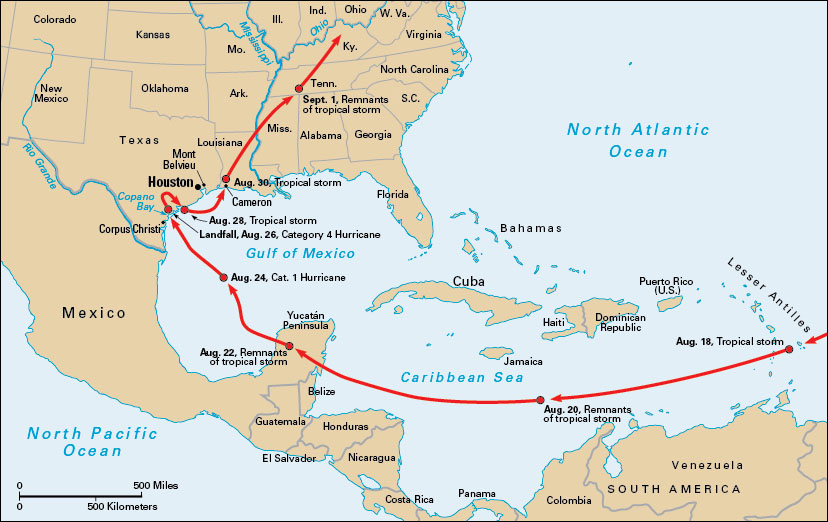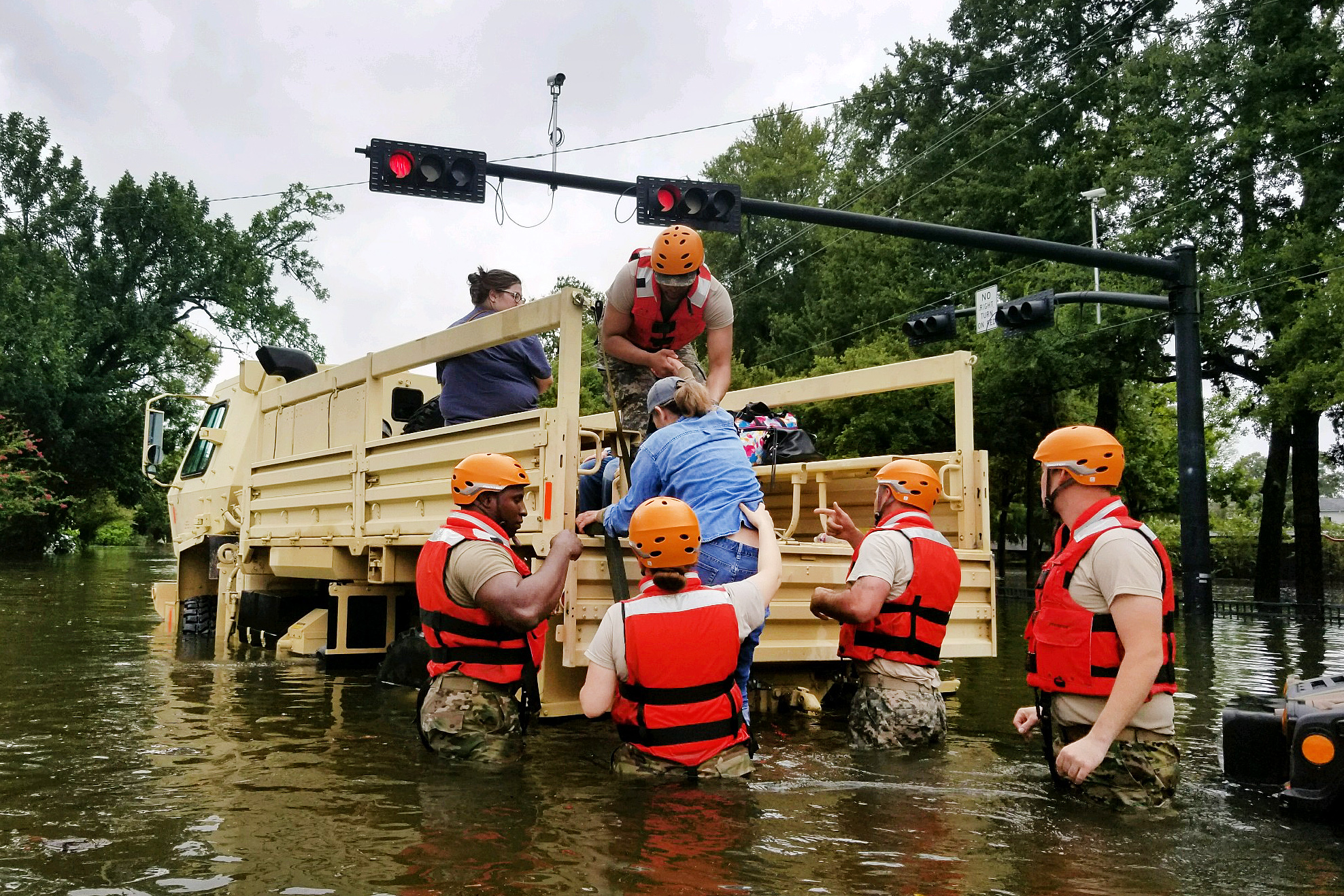Hurricane Harvey was a large, destructive storm that struck the United States in 2017. The slow-moving hurricane was exceptional for the extreme rainfall and catastrophic flooding it caused in Texas, particularly in Houston. At least 60 people were killed in the storm. Experts estimate that the hurricane caused as much as $180 billion in property damage.

Hurricane Harvey established a new record for the most rain produced by a tropical system in the continental United States. The U.S. National Weather Service measured 51.88 inches (131.77 centimeters) of rainfall from the storm at Cedar Bayou, near Mont Belvieu, Texas. Meteorologists estimate that the storm dropped as much as 25 trillion gallons (93 trillion liters) of water across Texas.
The storm.
In mid-August 2017, the hurricane began as a tropical storm in the Atlantic Ocean east of the Lesser Antilles. As the storm moved westward, it decreased in strength to a tropical depression, but soon regenerated into a powerful hurricane as it moved north into the Gulf of Mexico. On August 26, Harvey made landfall as a Category 4 hurricane with winds ranging from 131 to 155 miles per hour (210 to 249 kilometers per hour) near Corpus Christi, Texas. Category 4 indicates a very strong hurricane, according to the Saffir-Simpson scale of hurricane intensity.

Although Harvey weakened after making landfall, the massive storm drifted slowly back and forth. Over the next several days, the storm churned over southeastern Texas sending bands of heavy rainfall over Houston and other coastal towns before drifting back out to the Gulf of Mexico. On August 30, the storm made landfall again west of Cameron, Louisiana. It then moved slowly northeast and weakened.
As the heavy rainfall hit Houston, city officials initially instructed people to shelter in place and not to evacuate. However, officials later ordered mandatory evacuation of some communities near Houston reservoirs, which began to release water as heavy rains continued. More than 32,000 people fled to shelters in and around Houston. Emergency crews and volunteers in boats, trucks, and helicopters rescued residents stranded on rooftops by floodwaters.
The aftermath.
As Hurricane Harvey drifted back and forth over southeastern Texas, newspaper, television, and Internet reports showed images of Houston residents stranded on rooftops and amid flooded nursing homes, hospitals, and streets. Fires at chemical plants in the city caused alarm about the release of toxic chemicals.

Texas public safety officials estimated that around 48,700 homes sustained flood damage, including at least 1,000 that were completely destroyed and more than 17,000 that suffered major damage. About 100,000 homes were damaged by the storm nationwide.
Government officials and private citizens responded to the storm’s aftermath. Individuals, celebrities, and local groups donated millions of dollars to the Red Cross and other charities assisting in the recovery. Volunteers, including medical personnel and animal rescuers, came to Texas from across the United States to offer their help. Officials with the U.S. Federal Emergency Management Agency (FEMA) estimated that it would take years before the region fully recovers from the effects of the hurricane.
